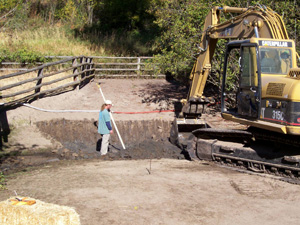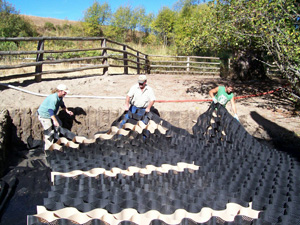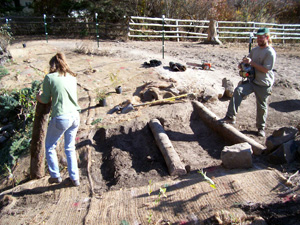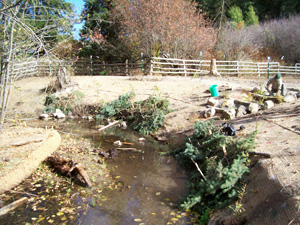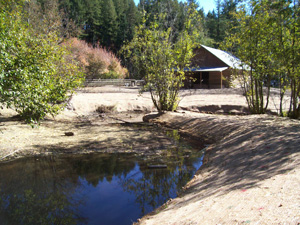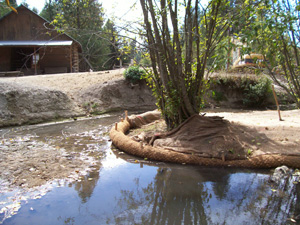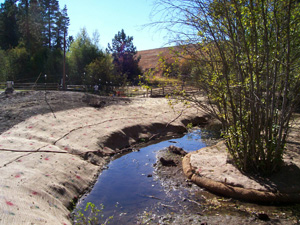 Watershed: Palouse River
Watershed: Palouse River
Stream Name: South Fork Palouse River
Date Established: 07/30/2005
Project Status: Complete, maintenance and monitoring ongoing
Overview
Funding Agency: Department of Environmental Quality (DEQ); Private Donations
Project Location: Latitude: 46.7586 N, Longitude: 116.9063 W
Target Pollutants:
- Sediment
- Temperature
- Nutrients
- Bacteria
Waterbody Type(s): Intermittent
Hydrologic Unit Code: 17060108
Description
Located upstream from Robinson County Park on the South Fork Palouse River, the Howard project included the revegetation of approximately 10,867 square feet of a highly degraded reach of river that has been heavily grazed by horses. The downstream portion of the property was fenced and grazing was not permitted. Stream banks were resloped and erosion control fabric and soil wraps were installed. A brush revetment was also installed. Approximately 493 feet of stream bank was stabilized with woody, emergent and grass species in order to provide filtration of nutrients and sediment. The revegetation of the denuded stream banks will also help decrease stream temperatures by increasing shade.A stream crossing was installed using a GeoWeb® system. The stream crossing allows the horses to access the pasture on the opposite bank with minimal erosion. The stream crossing is approximately 24 X 20 feet and provides a durable, load support for the animals. The GeoWeb® system is a cost effective alternative to a hardened rock stream crossing and will control erosion, reducing impacts to water quality. The stream was fenced from the pasture using electric ribbon wiring.
In addition to the restoration work outlined under the 319 Nonpoint Source Subgrant, the landowner contracted PCEI to stabilize an additional 60 feet of unstable and eroding banks. A series of wetlands were also created to capture runoff from the adjacent hillside and redirect flows away from the eroding bank into a large wetland swale. An additional wetland was also created downstream adjacent to Robinson County Park to capture and filter runoff from an unnamed tributary.
Previous Conditions
Prior to restoration activities, livestock had full access to the creek. Grazing and impacts from overland flows from the barn roof and hillside contributed to eroding banks. Limited vegetation existed in this reach of river due to grazing pressures.
Photo History:
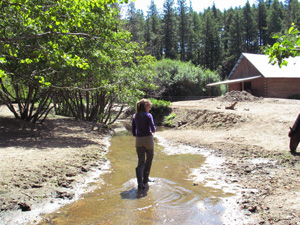 Tracy Brown and the Horses (July 2005): Prior to the installation of the GeoWeb® crossing, the horses had access to the creek in many places along this reach of river. The horses love to kick and splash in the river causing the channel to widen while also increasing sedimentation.
Tracy Brown and the Horses (July 2005): Prior to the installation of the GeoWeb® crossing, the horses had access to the creek in many places along this reach of river. The horses love to kick and splash in the river causing the channel to widen while also increasing sedimentation.
 Photo Point V1 Downstream (August 2005): Photo Point V1 Downstream August 2005. The lack of vegetation and the severity of the bank instability.
Photo Point V1 Downstream (August 2005): Photo Point V1 Downstream August 2005. The lack of vegetation and the severity of the bank instability.
